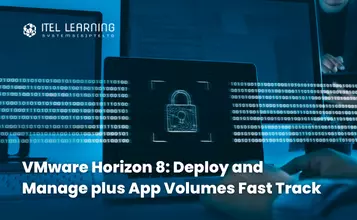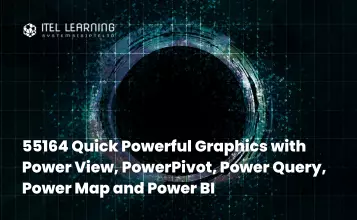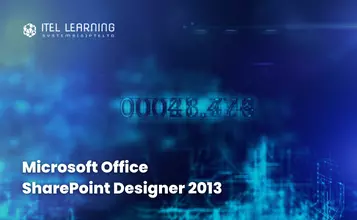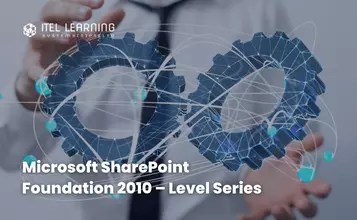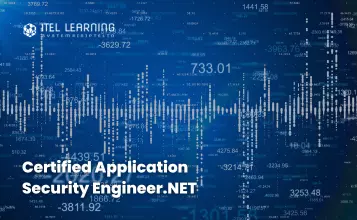Overview
This five-day accelerated, hands-on training course is a blend of VMware Horizon® 8: Skills for Virtual Desktop Management, VMware Horizon 8: Infrastructure Administration, and VMware App Volumes™, and VMware Dynamic Environment Manager™. Eight days of content are taught in five-days of extending learning.
This training collection gives you the hands-on skills to deliver virtual desktops and applications through a single virtual desktop infrastructure platform. You build on your skills in configuring and managing VMware Horizon 8 through a combination of lecture and hands-on labs. You learn how to configure and deploy pools of virtual machines and how to provide a customized desktop environment to end-users.
You learn how to install and configure a virtual desktop infrastructure platform. You learn how to install and configure VMware Horizon® Connection Server™ and VMware Unified Access Gateway™. You also learn how to configure a load balancer for use with Horizon and how to establish Cloud Pod Architecture.
Additionally, you learn how to use App Volumes to deliver applications and data to desktops and users in seconds and at scale. You gain skills in managing application life cycles from installation to update and replacement. You also learn how to use Dynamic Environment Manager to provide personalization and dynamic policy configuration across virtual, physical, and cloud-based environments to simplify end-user profile management.
Prerequisites
Customers attending this course should have, at a minimum, the following skills:
- Use VMware vSphere® Web Client to view the state of virtual machines, datastores, and networks
- Open a virtual machine console on VMware vCenter Server® and access the guest operating system
- Create snapshots of virtual machines
- Configure guest customization specifications
- Modify virtual machine properties
- Convert a virtual machine into a template
- Deploy a virtual machine from a template
Attendees should also have the following Microsoft Windows system administration experience:
- Configure Active Directory services, including DNS, DHCP, and time synchronization
- Restrict user activities by implementing Group Policy objects
- Configure Windows systems to enable Remote Desktop Connections
- Build an ODBC connection to an SQL Server database
Who Should Attend?
Operators, administrators, and architects for VMware Horizon should enroll in this course. These individuals are responsible for the creation, maintenance, or delivery of remote and virtual desktop services. Additional duties can include the implementation, support, and administration of an organization’s end-user computing infrastructure.
Course Outline
- Introductions and course logistics
- Course objectives
- Recognize the features and benefits of Horizon
- Describe the conceptual and logical architecture of Horizon
- Define a use case for your virtual desktop and application infrastructure
- Convert customer requirements to use-case attributes
- Explain basic virtualization concepts
- Use vSphere Client to access your vCenter Server system and VMware ESXi™ hosts
- Create, provision, and remove a virtual machine
- Create a Windows and a Linux virtual machine using vSphere
- Optimize and prepare Windows and Linux virtual machines to set up VMware Horizon desktop VMs
- Outline the configuration choices when installing Horizon Agent on Windows and Linux virtual machines
- Create a gold master for Windows Horizon desktops
- Identify the steps to set up a template for desktop pool deployment
- List the steps to add desktops to the Horizon Connection Server inventory
- Compare dedicated-assignment and floating-assignment pools
- Outline the steps to create an automated pool
- Define user entitlement
- Explain the hierarchy of global, pool-level, and user-level policies
- Describe the different clients and their benefits
- Access the VMware Horizon desktop using various VMware Horizon clients and HTML
- Configure integrated printing, USB redirection, and the shared folders option
- Configure session collaboration and media optimization for Microsoft Teams
- List the advantages of instant clones
- Explain the provisioning technology used for instant-clone desktop pools
- Set up an automated pool of instant clones
- Push updated images to instant-clone desktop pools
- Explain the difference between an RDS desktop pool and an automated pool
- Compare and contrast an RDS session host pool, a farm, and an application pool
- Create an RDS desktop pool and an application pool
- Access RDS desktops and application from Horizon Client
- Use the instant clone technology to automate the build-out of RDSH farms
- Configure load-balancing for RDSHs on a farm
- Monitor the status of the VMware Horizon components using the Horizon Administrator console dashboard
- Monitor desktop sessions using the HelpDesk tool
- Recognize VMware Horizon reference architecture
- Identify the Horizon Connection Server supported features
- Identify the recommended system requirements for Horizon Connection Server
- Configure the Horizon event database
- Outline the steps for the initial configuration of Horizon Connection Server
- Discuss the ADAM database as a critical component of the Horizon Connection Server installation
- Compare the authentication options that Horizon Connection Server supports
- Describe the Smartcard authentication options that Horizon Connection Server supports
- Outline the steps to create a VMware Horizon administrator and custom roles
- Describe the roles available in a VMware Horizon environment
- Explain the role that certificates play for Horizon Connection Server
- Install and configure certificates for Horizon Connection Server
- Install and configure True SSO in a VMware Horizon environment
- Recognize the features and benefits of Workspace ONE Access
- Recognize the Workspace ONE Access console features
- Explain identity management in Workspace ONE Access
- Explain access management in Workspace ONE Access
- Describe the Workspace ONE Access directory integration
- Describe the Workspace ONE Access directory integration
- Deploy virtual applications with Workspace services
- Describe the purpose of a replica connection server
- Explain how multiple Horizon Connection Server instances in a pod maintain synchronization
- Describe the 3D rendering options available in VMware Horizon 8
- List the steps to configure graphics cards for use in a VMware Horizon environment
- Configure a load balancer for use in a VMware Horizon environment
- Explain Horizon Cloud Pod Architecture LDAP replication and VIPA
- Explain Horizon Cloud Pod Architecture scalability options
- Explain concepts relevant to secure VMware Horizon connections
- Describe how to restrict VMware Horizon connections.
- Discuss the benefits of using Unified Access Gateway
- List the two-factor authentication options that are supported by Unified Access Gateway
- List Unified Access Gateway firewall rules
- Describe the situation in which you might deploy Unified Access Gateway instances with one, two, or three network interfaces
- Profile Management
- Application Management
- App Volumes components
- Requirements
- Installing and configuring App Volumes Manager
- Installing the App Volumes agent
- Packaging Applications
- Maintaining Applications
- Default writable volume templates
- Writable volume policies at creation
- Updating and rescanning writable volumes
- Enabling AppStacks
- Creating and provisioning AppStacks
- Assigning and updating AppStacks
- Overriding precedence in AppStacks
- Features and benefits
- VMware Dynamic Environment Manager terminology
- User environment settings and scope
- User profile scenarios
- Infrastructure and system requirements
- VMware Dynamic Environment Manager Agent (FlexEngine) requirements
- Group Policy configuration
- Management Console configuration
- Personalize User Profile
- User environment configuration
- Predefined and user-customized application settings
- Using Application Profiler
- Using the Self-Support Tool
- Using the Helpdesk Support Tool
- Scope of VMware Horizon Smart Policies
- Configure VMware Horizon Smart Policies settings
- Define Smart Policies conditions
